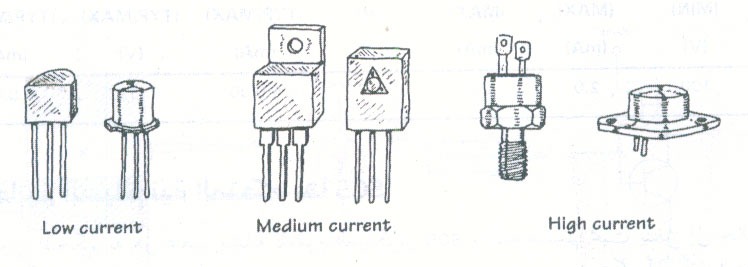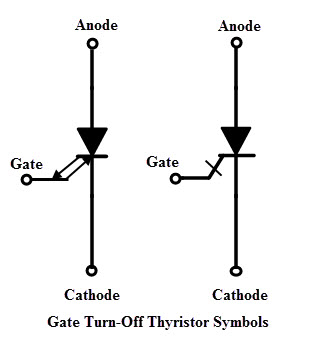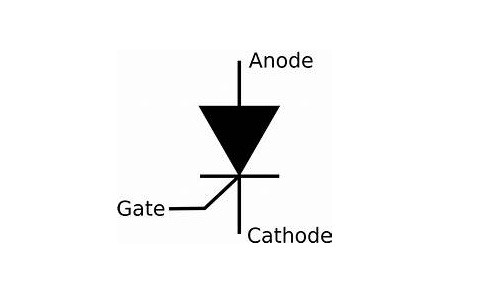The Thyristor
A thyristor, also known as a Silicon Controlled Rectifier (SCR), is a semiconductor device.
What is a Thyristor?
Remember: The diode allows current to flow from the Anode to the Cathode if the Anode voltage is greater than the Cathode voltage by approximately 0.7 volts. However, this behavior is different in the thyristor.
In the thyristor, current will only pass if a single pulse is applied to the Gate. Once triggered, the thyristor will conduct like a wire.
Understanding How the Thyristor Works
- The thyristor can be controlled through the Gate.
- Applying a positive pulse to the Gate will put the thyristor in an ON state.
- When the thyristor is in an ON state, it operates like a diode.
- If the pulse is removed from the Gate, the thyristor remains in an active state.
- The thyristor switches to an OFF state when the voltage on the Anode becomes negative, or when the power source is completely removed, or by shorting the Cathode and Anode using a small resistor or switch.
- The thyristor will also turn OFF if a weak current flows through it, known as the minimum holding current (Ih).
Thyristor Symbol

Thyristor Symbol
The image above depicts the symbol used to represent a thyristor in circuit diagrams. It consists of three terminals: Anode, Cathode, and Gate. The Anode and Cathode terminals represent the main current-carrying paths, while the Gate terminal is used to control the thyristor's operation. This symbol simplifies the representation of the thyristor's complex internal structure and facilitates its integration into various electronic circuits.
Thyristor Advantages as Current Breakers
The thyristor, used as a current breaker, offers distinct benefits:
- High tolerance to vibrations and noise, unlike mechanical breakers.
- Produces no electric spark or noise during switching, ensuring quiet operation.
- Extremely fast switching speeds, sometimes reaching nanoseconds in frequency converters.
- Handles high voltages and currents, up to 2000 amperes, despite its compact size.
- Easy controllability through Gate pulses, allowing for precise operation.
These advantages make thyristors an ideal choice for efficient and reliable current breaking applications.

Thyristors Types
Thyristor Types: SCR and GTO
In the world of thyristors, two prominent types are widely used: the Gate-turn-off thyristor (GTO) and the Silicon Controlled Rectifier (SCR).
GTO (Gate-turn-off thyristor):
- It can be switched to the OFF state with a negative gate pulse

GTO Symbols
The GTO thyristor possesses a unique feature that sets it apart from other thyristors. It can be switched to the OFF state by applying a negative gate pulse. This characteristic enables precise control over its conduction state, allowing for rapid switching operations.
SCR (Silicon Controlled Rectifier):
- It cannot be moved to the OFF state on Gate

SCR Symbol
On the other hand, the SCR thyristor lacks the ability to be turned OFF through the Gate. Once triggered, it remains in the ON state until the current flowing through it drops below a certain threshold. As a result, SCR thyristors are commonly used for applications requiring uninterrupted conduction.
Both GTO and SCR thyristors play essential roles in various electronic and power control systems, each tailored to specific needs and applications.